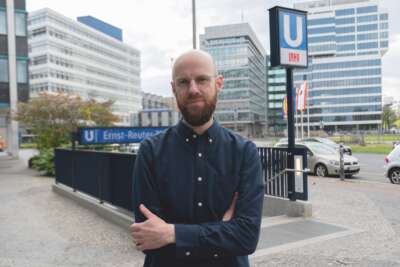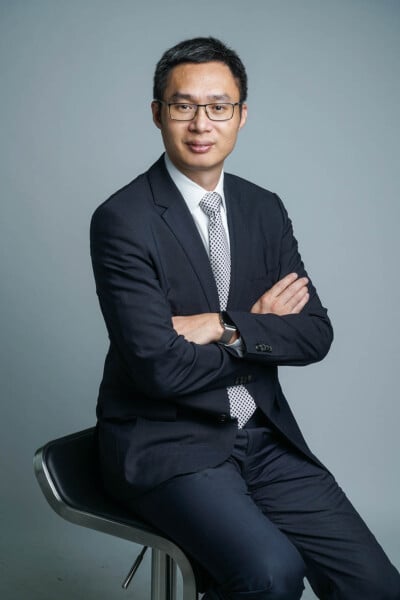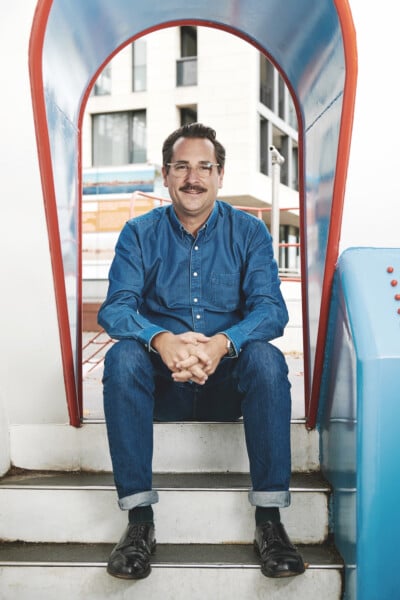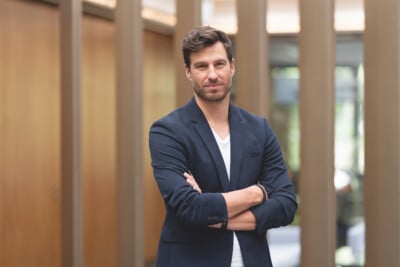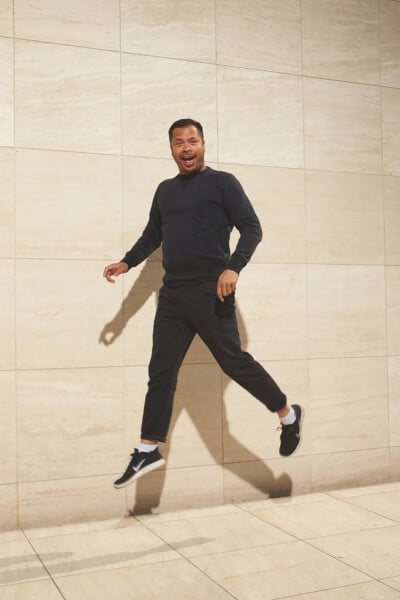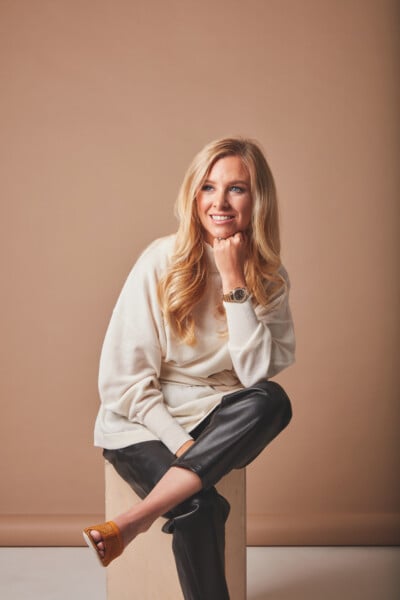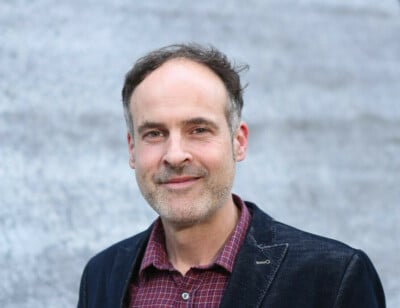3D Stimuli

- Oliver Latta, Head of EXTRAWEG
- Photos: Oliver Latta - EXTRAWEG

In March 2017, Oliver Latta shared his first animation clip on Instagram with the world. Since then, he’s gained almost a million followers. With a strong aesthetic in terms of composition, light, and colour, his bizarre vignettes tell of the endless pursuit of perfection and recognition. Socially critical and self-deprecating, he challenges his audience to look beyond the smartphone’s frame into their own abyss. But he doesn’t wish to impose his own message on the viewer, leaving space for their own reaction.
The tagline on your website says: “Artist, Director, Human” – what’s this triad about?
On the one hand, I am an artist, since I create the art, and on the other hand, I am also a director when I create commissioned works for exter nal clients. My works are often very provocative and evoke a wide range of emotions, portraying them in a certain way. Hence the aspect of “human.”
You have been self-employed for four years under the name EXTRAWEG, after working for a large film production company. How has your work changed?
In my old company, I “only” worked as a 3D artist, taking care of the creative aspect. There was always an art director on each project who had his own vision, while we 3D artists were responsible at the next step for transforming these visions into ideas or approaches. My res ponsibilities were mainly the technically complex things. I was pretty much a VFX artist, but with a lot of design responsibility. Basically, I still do the same thing today when I create my art videos. I develop technical “setups” to realise my own visions. The beauty of being your own boss is that you’re involved in every step of the process – from first client contact, to pitching the idea, and to the finished result.
What’s been your most exciting project over the last years?
Since the EXTRAWEG project, I can’t define a “most exciting project” because every project is very individual and exciting in its own way. I try to choose projects carefully, to develop myself and redefine my own limits.
If I had to choose one project now, it would be the music video for the British band Bring Me the Horizon. The video currently has almost 25 million views on YouTube and has been shown on British breakfast television, among other things. It’s also the project I’ve received the most feedback on so far. As an artist, of course it’s very important to get as many reactions from people as possible, and to trigger emotions. The
band still uses the material for their tour visuals at their sold-out concerts around the world and I get linked on Instagram all the time when people see my work somewhere on stage. You get the feeling that the work never loses its relevance.
You’ve said that “the great advantage of animated worlds is that you can create anything your imagination can come up with.” What inspires your imagination?
I’m usually inspired by all kinds of situations in everyday life for my videos. I like to play with these impressions and present them in the most ambiguous and unconventional way possible. Each of my works contains a certain form of social criticism, but not necessarily related to a single fact. My inspiration usually comes from a feeling or certain emotion that arises in me in relation to a certain situation.
How would you define EXTRAWEG’s unique approach? Your creations are extraordinary and bizarre – do they know any boundaries at all?
I once read that 90% of the information our brain receives is visual. Today we live in a visually overloaded world where we consume images at a rate that we can’t fully absorb. In a way we immunise ourselves against
reality, and without stimuli we stop feeling and thinking.
I feel we can’t empathise with news images as much as we can with 3D animations that show the same reality. I think that explains my videos very well. With them, I try to draw attention to the things that somehow engage or amuse me. Instead of showing them explicitly, I choose to show them ambiguously, renouncing the obvious while stretching boundaries.
In my work, both uploaded to Instagram and made for clients, there’s always something in common: I want to provoke, and sometimes confuse. I want to take viewers out of their comfort zones, and most importantly I want them to feel or think something.
So with all these visions, I wanted to create an identity, a philosophy, an attitude. When a client comes to me, they are not looking for people or smashed eyes – they contact me to create something for them that can
connect and touch people.

Computers and software, essential for your work, are constantly evolving. Does this evolution influence your artistic process, or do you feel free from
technical limitations?
Technically, everything is possible nowadays – it’s just a question of time. Therefore, yes. I would say I feel free from technical limits. Unfortunately, the time factor plays an ever-increasing role in our field. From the artist’s point of view, a video is never perfect and you are never 100% satisfied with the result.
With Unreal Engine and other real-time engines, the CGI creation process is changing. Waiting for renderings is a thing of the past. Does this technology already play a role for you – and how does it change your creative process?
The rendering process and simulation times in 3D are getting faster and faster. A lot of things can already be done in real time in conventional 3D programmes. So the programmes are evolving in this direction. I have not yet managed to deal with real realtime engines in the long term. Unreal Engine, however, is at the top of my list.
The attention spans and viewing habits of Generation Z are strongly influenced by social media. What does this mean for moving images in art and advertising?
Short and meaningful content. It’s becoming increasingly difficult to stand out from the crowd, as everything has already been seen or copied a thousand times. So uniqueness and innovation are becoming
more and more important.
Almost a million people follow you on Instagram. What influence does this success and increased visibility have on your creativity?
Instagram has changed my life. It is the reason why I decided to open my design studio, and it’s formed the basis for people sending me requests, and inviting me for talks or interviews. Since I uploaded my first video four years ago, the number of followers has never stopped growing. Instagram gives me the platform to share my videos with millions of people and get feedback from them as well.
Nowadays, social media is a very powerful tool to reach millions of people to create reactions and get people to share content. With every video you post, you can influence which future job requests you receive. It’s crazy – if I share a slightly nicer or more aesthetic video, I can set myself up to receive a request from the fashion or beauty sector. If I’m not looking for a specific job, I’ll post something weird or provocative. This usually gets me a lot of interaction on social media and therefore new followers – balance is key here.
What’s next for EXTRAWEG – do you have an exciting project to share?
I’m currently working on a very long running project of my own (also through the Corona pandemic). It’s a 1.5-minute intro animation that I developed with US actor and director Ben Stiller over several months and produced in my studio. We’re close to completion. The release is February 2022 on Apple TV. Very exciting.


